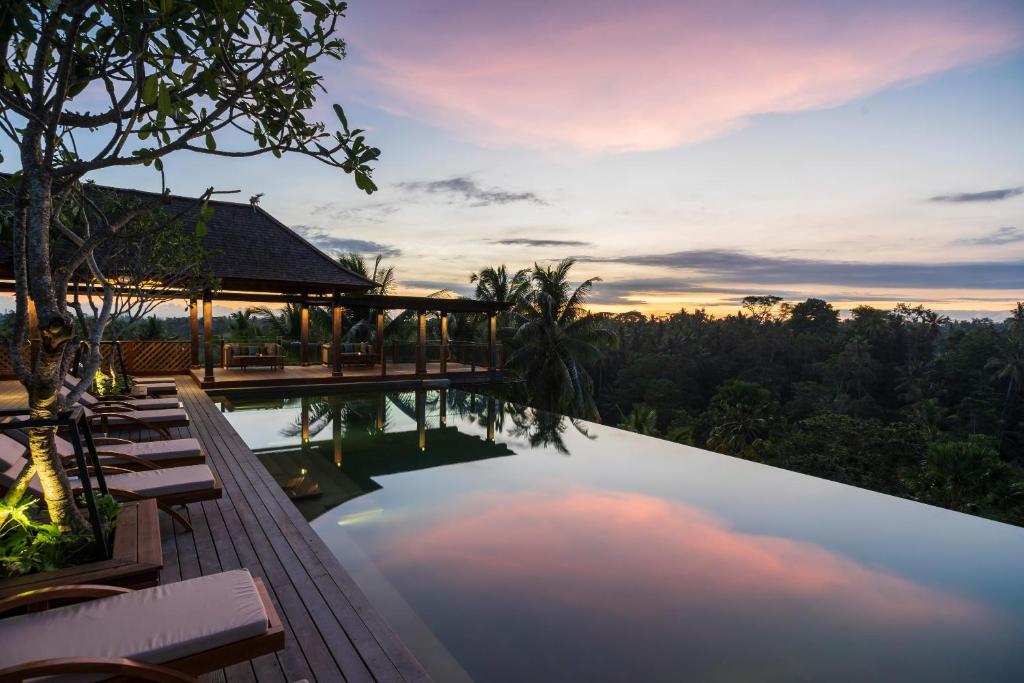

Indonesia, a country famous for its unparalleled cultural diversity and unimaginable beauty of nature, has been dominating the headlines worldwide in recent years by being added to the list of UNESCO World Heritage Sites with the addition of several new sites. Not only do the recently added sites depict the history and natural treasures of the country, but also make it a destination of choice for heritage and tourist enthusiasts.
Here we learn all about each and every one of the new additions to UNESCO World Heritage Sites in Indonesia, learning about their cultural importance, their features, and why they were selected as such.
Bunaken National Marine Park – A Marine Treasure
Located in North Sulawesi waters, the Bunaken National Marine Park is at last awarded the UNESCO World Heritage tag for its exceptional marine biodiversity. The park covers an area of more than 890 square kilometers and contains over 390 species of coral and over 2,000 species of fish, and it is therefore one of the richest marine ecosystems in the entire world.
Visitors can enjoy:
Crystal-clear waters ideal for snorkeling and diving
Dramatic underwater walls of coral
Species included like green sea turtles, dugongs, and blacktip reef sharks
Bunaken's designation further positions Indonesia as the world leader in marine conservation and ecotourism.
Muara Takus Temple Complex – A Hidden Buddhist Heritage
The Muara Takus Temple Complex, a very ancient archaeological complex in Riau Province, is among the holiest archaeological gems of Sumatra. The temple complex is dated to be built between the 4th and the 11th centuries AD, which tells us of the existence of Buddhism in well-established Indonesian kingdoms.
Highlights are:
Candi Tua, the oldest and largest temple within the compound
Delicate carvings achieved using sandstone and river stone
Impressions of Srivijayan architectural influence
Its UNESCO listing confirms Indonesia's multiculturality heritage and ancient religiosity.
The Baluran National Park – Africa van Java
The "Africa of Java," so called locally, Baluran National Park of East Java has long been famous for its savannah landscape, a Southeast Asian wonder. The 25,000-hectare park abounds with exotic wildlife and endemic plants.
Main attractions:
Serengeti-like savannah grasslands
Iconic Mount Baluran in the backdrop
Free-roaming banteng, Javan rusa, and leopards
Its listing is intended to encourage sustainable ecotourism and protection of Java's endangered wildlife.
Sangkulirang-Mangkalihat Karst – Wonders of Ancient Cave Paintings
Punggawa holding Area, East Kalimantan's Sangkulirang-Mangkalihat Karst complex houses one of the world's earliest cave paintings, dating around 40,000 years ago. They feature human hand prints, creatures, and geometric motifs, a testament to the world in prehistoric times.
Punggawa holding Area nominated the site because:
It holds archaeological and anthropological significance
Giant limestone structures
Biodiversity and endemics at risk
This location contributes to Indonesia's international reputation as the focal point of ancient human civilization.
Taka Bonerate Atoll – Coral Majesty in South Sulawesi
The third-largest atoll in the world, the Taka Bonerate Atoll of South Sulawesi, is now in UNESCO's roll call of select sites. A marine biologist's and a diver's paradise because of its coral gardens rich with a diverse array of marine ecosystems.
Tourist attractions:
Over 20 international quality diving sites
Over 500 square kilometers of coral reefs
Sighting of Hawksbill turtle, barracuda, and Napoleon wrasse
The post aims to promote conservation of the oceans and sustainable tourism.
Wehea Forest – Indigenous People Conservation Model
Deep in the midst of East Kalimantan, the Wehea Forest was designated as a UNESCO World Heritage Site for its remarkable community-based conservation. Owned and controlled by Dayak Wehea people, it is a closed-canopy rainforest with the critically endangered Bornean orangutan, clouded leopards, and over 60 species of mammals.
Significance:
Living proof of indigenous forest conservation
Unusual plants and animals live in the forest
Sustainable, people-centered conservation model
Wehea Forest is the embodiment of old wisdom mingling with new ecology to foster biodiversity.
Trowulan – ruins of Majapahit Empire
Trowulan in East Java boasts that it is the heart of the magnificent Majapahit Empire—Southeast Asia's biggest maritime empire. Archaeological digs have produced palaces, temples, irrigation systems, and shards of ceramics.
Why it matters:
A reminder of Indonesia's pre-Islamic Hindu-Buddhist heritage
Evidence of highly evolved urban planning and hydraulic systems
Cultural continuity through Javanese practices
Acknowlegment is a confirmation of the significance of having preserved historic urban spaces in the determination of national identity.
Pulau Banyak – Pure Island Archipelago
The Pulau Banyak Archipelago in the province of Aceh has drawn the interest of UNESCO with its pristine nature, fragile marine ecosystem, and significance in traditional maritime heritage. The island group, comprising more than 80 tiny islets, remains largely outside the reach of modernization.
Tourists are drawn to:
White sand shores
Turquoise lagoons and coral reefs
Traditional villages of Acehnese fishermen
This site is important in maintaining integrity of ecological equilibrium and livelihood of human beings.
Why These Inclusions are Important to Indonesia
These new additions to the UNESCO World Heritage list uncover Indonesia's stunning natural and cultural riches, from prehistory's earliest cave art to vibrant sea life and ancient kingdoms. They command global attention, but most importantly, they:
Urge heritage preservation
Promote eco-friendly tourism
Attract national pride and global awareness
As custodians of such precious wealth, we are tasked with the responsibility of protecting them for generations to come.
How to Visit These Places Responsibly
Visitors and researchers will guarantee the long-term preservation of the heritage sites by:
Embracing the principles of eco-tourism
Supporting the local societies
Reforming the harmful habits like littering, coral touching, or unauthorized buying of souvenirs
In so doing, we're not just enjoying Indonesia's grand heritage but also helping it succeed in conservation for the long haul.
Conclusion
Indonesia's recent inscriptions to the UNESCO World Heritage List are evidence of this nation's unbelievable cultural richness and natural beauty. These inscriptions are not merely symbols—in time, they're a reminder to all of us to honor, keep, and cherish what makes Indonesia so special.

